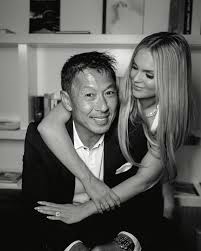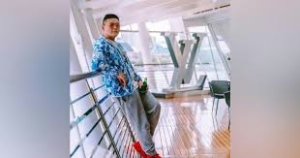Complete Guide: Detecting Fraudulent Influencers in Singapore
Executive Summary
Singapore has experienced a dramatic surge in social media fraud, with Singaporeans losing a record $822 million to scams in 2024. The regulatory landscape is evolving rapidly, with the Monetary Authority of Singapore (MAS) taking decisive action against unqualified financial influencers. This comprehensive analysis provides frameworks for detecting fraudulent influencers across all categories, with specific focus on Singapore’s unique regulatory environment.
Singapore’s Regulatory Framework
Financial Influencer Regulations
The Monetary Authority of Singapore (MAS) has mandated that financial influencers who share investment tips and financial advice online must be licensed and regulated under the Financial Advisers Act. This applies to:
- Influencers receiving payment for recommending investment products
- Those providing regular investment recommendations, even without direct payment
- Anyone expressing opinions on investment products in a professional capacity
Specific Restrictions
In 2022, MAS issued guidelines stipulating that digital payment token service providers should not engage third parties, including finfluencers, to promote their digital payment token services to the general public in Singapore. This creates a clear regulatory boundary for cryptocurrency-related content.
Enforcement Trends
MAS has received eight complaints against financial influencers in 2025, an increase from the average of five complaints per year in the last five years, indicating heightened scrutiny and public awareness.
Fraud Detection Framework
Tier 1: Credential Verification
For Financial Influencers:
- Check MAS Financial Advisers Register
- Verify CFA credentials through CFA Institute
- Confirm CFP status via CFP Board
- Validate CPA licenses through Singapore’s accounting bodies
For General Influencers:
- Cross-reference professional claims with official directories
- Verify educational credentials with institutions
- Check company affiliations and employment history
Tier 2: Content Analysis Red Flags
Financial Content Specific:
- Promises of guaranteed returns or “risk-free” investments
- Pressure tactics with urgency (“limited time offer”)
- Promotion of get-rich-quick schemes
- Lack of risk disclaimers or regulatory warnings
- Encouraging bypassing of traditional financial institutions
General Content Patterns:
- Minimal or erratic online presence indicating lack of authentic digital footprint
- Pressure to commit to quick decisions without allowing thorough consideration
- Inconsistent personal branding or lifestyle claims
- Sudden wealth displays without credible source explanation
Tier 3: Technical Verification
Digital Footprint Analysis:
- Domain age and registration details for personal websites
- Social media account creation dates and growth patterns
- Cross-platform consistency in messaging and branding
- Verification of follower authenticity using engagement rate analysis
Advanced Fraud Detection:
- Singapore is taking key actions to combat deepfakes, making verification of authentic content increasingly important
- Check for AI-generated profile photos using reverse image searches
- Analyze video content for deepfake indicators
- Verify live streaming authenticity
Singapore-Specific Scam Patterns
Platform-Based Risks
Half of Singapore’s scams occur via WhatsApp, Facebook and Instagram, with Facebook Marketplace, Facebook ads, and Facebook pages identified as highest risk for e-commerce scams. This creates specific vulnerability points for influencer fraud.
Messaging Platform Exploitation
Messaging platforms such as WhatsApp, Gmail, and Telegram are increasingly targeted, with SMS and text-based scams rising by 3% since 2023. Fraudulent influencers often migrate conversations to these platforms to avoid platform monitoring.
Investment Scam Prevalence
Identity theft tops the list of scam types, followed closely by investment and online shopping scams, indicating that investment-focused influencers require heightened scrutiny.
Due Diligence Methodology
Phase 1: Initial Screening (5-10 minutes)
- Regulatory Check:
- Search MAS financial advisers register
- Check professional licensing boards
- Verify claimed credentials through official channels
- Basic Digital Verification:
- Google search for negative reviews or scam reports
- Check ScamShield Singapore database
- Review social media account authenticity
Phase 2: Deep Analysis (30-60 minutes)
- Content Pattern Analysis:
- Review 3-6 months of posts for consistency
- Analyze engagement patterns and follower quality
- Check for regulatory compliance in financial content
- Cross-Platform Verification:
- Compare information across all social platforms
- Verify contact information and business addresses
- Check for consistent personal branding
- Financial Claims Verification:
- Research investment strategies or products promoted
- Verify performance claims through independent sources
- Check for proper risk disclosures
Phase 3: Professional Consultation (As Needed)
- Expert Opinion:
- Consult licensed financial advisors about specific advice
- Seek legal counsel for complex regulatory questions
- Engage cybersecurity professionals for technical verification
Red Flag Taxonomy
Critical Red Flags (Immediate Disqualification)
- No valid financial licenses for financial advice
- Promises of guaranteed returns
- Pressure for immediate action or payment
- Requests for personal financial information
- Promotion of unregulated investment schemes
Major Red Flags (Require Investigation)
- Inconsistent biographical information
- Sudden lifestyle changes without explanation
- Excessive focus on recruitment or referrals
- Lack of transparency about income sources
- Minimal engagement relative to follower count
Minor Red Flags (Monitor Closely)
- Recent account creation with rapid growth
- Limited interaction with followers
- Generic or purchased content
- Inconsistent posting patterns
- Lack of genuine expertise demonstration
Legal Protections and Recourse
Reporting Mechanisms
- MAS for financial influencer violations
- Police for criminal fraud
- ScamShield for scam reporting
- Platform-specific reporting tools
Consumer Protection
Singapore’s regulatory framework provides multiple layers of protection, but individual due diligence remains crucial. The evolving nature of influencer fraud requires continuous vigilance and adaptation of detection methods.
Conclusion
The Singapore influencer landscape is increasingly regulated, particularly for financial content. The combination of strong regulatory oversight, advanced technological countermeasures, and public awareness campaigns creates a robust defense against influencer fraud. However, the sophistication of scams continues to evolve, requiring continuous education and vigilance from consumers.
Success in identifying fraudulent influencers depends on systematic application of this framework, regular updates to detection methods, and healthy skepticism combined with professional verification of any significant financial or investment advice.
Real Influencer Scams in Singapore: In-Depth Case Analysis
Executive Summary
Singapore has become a critical battleground in the global fight against influencer-driven fraud, with losses reaching unprecedented levels. The sophistication of these scams has evolved dramatically, with fraudsters increasingly targeting Singapore’s affluent population through social media platforms. This analysis examines documented cases and patterns of influencer fraud in Singapore, providing crucial insights for detection and prevention.
Scale of the Problem
Financial Impact
- Total Losses: Singaporeans lost S$1.1 billion to scams in 2024, representing a dramatic increase from previous years
- Government Impersonation Scams: S$151.3 million lost specifically to government official impersonation scams in 2024
- Platform Distribution: Half of Singapore’s scams occur via WhatsApp, Facebook, and Instagram, with Facebook Marketplace having the highest risk
Enforcement Response
As part of global efforts, Singapore participated in Operation First Light 2024, which resulted in:
- 3,950 suspects arrested globally
- 14,643 additional suspects identified
- USD 257 million seized worldwide
- Targeting of phishing, investment fraud, fake online shopping sites, romance and impersonation scams
Major Documented Cases
Case Study 1: The 2023 Money Laundering Network
Background: The largest money laundering case in Singapore’s history involved multiple suspects who used social media presence to legitimize their operations.
Key Details:
- Su Wenqiang (32) pleaded guilty to 2 money laundering charges, becoming the first of 10 accused to plead guilty
- Sentenced to 13 months in prison in April 2024
- The network involved suspects with multiple passports and international property investments
- Su Jianfeng (36) invested heavily in Dubai real estate between 2017-2020, purchasing at least 10 apartments and two villas despite having a Chinese warrant for his arrest
Modus Operandi:
- Used luxury lifestyle displays on social media to attract victims
- Leveraged multiple citizenships and international presence to evade detection
- Confiscated luxury items included Bearbricks and other high-value collectibles used for social media credibility
Case Study 2: Bedok Police Division Mass Arrest (July 2024)
Scale: 41 people arrested, ages 14-72, linked to over 500 people in scam and loan sharking operations
Key Insights:
- Demonstrated the extensive network nature of modern scam operations
- Showed how young people (as young as 14) are being recruited into scam networks
- Highlighted the intersection between traditional loan sharking and modern digital fraud
Case Study 3: Anti-Scam Centre Impersonation
The Ultimate Irony: Scammers impersonated Singapore’s own Anti-Scam Centre, calling victims while pretending to be police officers.
Statistics:
- Over 1,500 such impersonation scams reported to police in 2024
- Demonstrates the sophistication and audacity of modern scam operations
- Shows how legitimate anti-fraud initiatives are weaponized by criminals
International Comparison Cases
UK Finfluencer Prosecution
Case: Emmanuel Nwanze and Holly Thompson charged for running @holly_fxtrends Instagram account
Violations:
- Provided advice on contracts for difference without FCA authorization
- Promoted unauthorized trading schemes
- Appeared before Westminster Magistrates’ Court in June 2024
Relevance to Singapore: This case demonstrates international regulatory convergence and the global nature of finfluencer enforcement.
US Crypto Manipulation Case
Case: Avraham Eisenberg convicted in $110 million cryptocurrency exchange manipulation
Details:
- Executed manipulative trading scheme on cryptocurrency exchange
- Defrauded exchange and investors of $110 million
- Shows intersection of influencer marketing and sophisticated financial fraud
Common Fraud Patterns Identified
1. Lifestyle Legitimization
Pattern: Fraudsters use displays of wealth and luxury to establish credibility Singapore Examples:
- Money laundering suspects showcasing luxury properties
- Use of high-value collectibles (Bearbricks, luxury watches) in social media posts
- International property portfolios used as social proof
2. Multi-Platform Exploitation
Pattern: Scammers use multiple platforms to avoid detection and maximize reach Singapore Statistics:
- 50% of scams occur via WhatsApp, Facebook, and Instagram
- SMS and text-based scams rising by 3% since 2023
- Migration from public platforms to private messaging apps
3. Authority Impersonation
Pattern: Fraudsters impersonate legitimate authorities to gain trust Singapore Cases:
- Over 1,500 Anti-Scam Centre impersonation cases in 2024
- Government official impersonation scams totaling S$151.3 million
- Use of official-looking communications and fake credentials
4. Age-Diverse Recruitment
Pattern: Scam networks recruit across all age groups Singapore Evidence:
- Bedok operation arrestees aged 14-72
- Young people increasingly used as money mules and account holders
- Elder abuse through romance and investment scams
Detection Methodology for Singapore Context
Red Flag Indicators
- Sudden Wealth Display: Unexplained luxury lifestyle changes
- Multi-Citizenship Claims: Possession of multiple passports or unclear residency status
- International Property Emphasis: Excessive focus on overseas investments
- Authority Association: Claims of government connections or regulatory approval
- Age-Inappropriate Wealth: Young individuals displaying excessive luxury
Verification Techniques
- Property Records: Cross-reference claimed properties with public records
- Passport Verification: Check multiple citizenship claims against official databases
- Social Media Archaeology: Analyze historical posts for consistency
- Network Analysis: Map connections to known scam networks
- Financial Timeline: Verify legitimacy of wealth accumulation timeline
Regulatory Response Evolution
Current Enforcement Trends
- Increased international cooperation (Operation First Light 2024)
- Enhanced focus on money laundering prosecutions
- Stricter penalties for youth involvement in scams
- Improved victim protection measures
Future Outlook
The Protection from Scams Act enables Singapore Police Force to better protect scam victims, even those who don’t believe they’re being scammed. This represents a significant evolution in regulatory approach.
Conclusion
The sophistication of influencer scams in Singapore has reached unprecedented levels, with fraudsters leveraging the city-state’s status as a financial hub to legitimize their operations. The documented cases reveal patterns of international networks, multi-platform exploitation, and increasingly sophisticated social engineering techniques.
Key takeaways for detection:
- Lifestyle displays should be independently verified
- International connections require enhanced scrutiny
- Authority claims must be directly verified with official sources
- Young and old participants may both be victims and perpetrators
- Private messaging platforms represent high-risk continuation points
The ongoing evolution of these scams requires continuous adaptation of detection methods and international cooperation to combat their growing sophistication and scale.
On social media, influencers often appear to be living incredibly lavish lives. Their feeds are filled with luxury vacations, designer clothes, and fancy dinners. Every post seems to showcase a new car or a high-end gadget. To their followers, it may seem as though money is never a problem.
But behind the scenes, things aren’t always what they seem. Many influencers borrow or rent expensive items just for photos. Some attend exclusive events only as guests, not as paying customers. Even those impressive brand deals might pay less than people imagine.
Often, influencers spend a significant portion of their earnings trying to maintain their online image. They may even go into debt just to maintain their glamorous image. In reality, many are living paycheck to paycheck, despite what their perfectly curated profiles suggest.
The Illusion of Wealth: How People Present Themselves as Richer Than They Are
Core Mechanisms of Wealth Presentation
Vincent Chan highlights several key mechanisms people use to appear wealthier than they actually are:
1. Leveraging Credit Card Debt
People use credit to purchase luxury items they can’t actually afford. According to Chan, the average American carries about $7,000 in unpaid credit card debt, much of which goes toward maintaining appearances. This creates a facade of wealth that masks financial insecurity.
2. Visible vs. Invisible Wealth
There’s a fundamental distinction between:
- Visible wealth: Luxury cars, designer clothing, the latest gadgets
- Invisible wealth: Bank accounts, investments, financial security, peace of mind
Most truly wealthy individuals don’t flaunt their wealth through conspicuous consumption. As Chan notes, most millionaires drive modest cars and wear ordinary clothing.
3. Social Comparison and FOMO
The “Keeping up with the Joneses” phenomenon has intensified in the social media era. Without clear personal goals, people are vulnerable to endless cycles of comparison, using others as benchmarks for success rather than focusing on their own financial health.
The Psychology Behind Wealth Presentation
This behaviour is driven by several psychological factors:
- Status anxiety: Fear of being judged as less successful than peers
- Social validation: Using material possessions as a proxy for achievement
- Identity construction: Building a persona that aligns with aspirational self-image
- Hedonic adaptation: The diminishing pleasure from purchases, requiring ever more expensive items
Influencer Case Studies
1. The Fyre Festival & Billy McFarland
Perhaps the ultimate example of presenting false wealth. McFarland created an illusion of luxury through slick marketing and influencer endorsements, but the reality was a disaster. After serving prison time, he’s reportedly still engaging in questionable ventures while maintaining a wealthy appearance.
2. Luxury Fashion Influencers
Many fashion influencers rent designer clothes or use “haul and return” tactics—purchasing expensive items, photographing them, and returning them. Some maintain “closet accounts” documenting every luxury purchase, but investigations have revealed many use replicas or temporary rentals.
3. Real Estate and Lifestyle Influencers
Some showcase lavish properties they don’t own by:
- Renting Airbnbs for photoshoots
- Using hotel suites as backdrops
- Photographing in model homes or staging areas
- Accessing luxury amenities through day passes or memberships
4. Financial “Gurus”
Ironically, many financial advice influencers project wealth while selling courses on achieving wealth:
- Posing with rented exotic cars
- Using stock footage of mansions
- Creating false testimonials about investment returns
- Selling the appearance of success rather than actionable strategies
The Social Media Amplification Effect
Social media has supercharged wealth presentation through:
- Curated content: Showing only the best moments
- Algorithmic reinforcement: Platforms promote aspirational content that drives engagement
- Filters and editing: Enhancing the appearance of luxury settings and possessions
- Borrowed settings: Taking photos in luxury locations without disclosing that they don’t own them
- Sponsorships masquerading as purchases: Receiving free items while implying they were bought
The Real Cost
The pursuit of appearing wealthy extracts significant costs:
- Financial stress and mounting debt
- Anxiety from maintaining appearances
- Reduced ability to build actual wealth through savings and investments
- Lost opportunities for authentic connections
Breaking the Cycle
Vincent Chan suggests:
- Developing clear personal financial goals
- Competing against yourself rather than others
- Building “invisible wealth” that provides actual security
- Recognising that most truly wealthy people don’t feel compelled to demonstrate their wealth
As Chan reminds his followers: “You’re not behind.” The race to appear wealthy is one that nobody truly wins.
Singapore’s Wealth Presentation Culture: Notable Influencer Examples
Singapore presents a fascinating case study for wealth presentation given its status as a financial hub with one of the highest concentrations of millionaires globally, combined with strong Confucian values that traditionally emphasise humility. Yet, a vibrant influencer culture has emerged that often showcases lavish lifestyles. Here are some notable examples:
Singapore’s High-Profile Wealth Presenters
1. Jamie Chua
Often called Singapore’s “Queen of Instagram,” Jamie Chua gained fame for reportedly having one of the largest Hermès collections in the world, housed in a fingerprint-secured closet. While Chua does come from genuine wealth (she was formerly married to Indonesian tycoon Nurdian Cuaca), her careful curation of luxury displays has made her a prime example of conspicuous consumption. Her social media presence revolves around showcasing designer items, first-class travel, and luxury property.
2. Kane Lim (Bling Empire)
Featured on Netflix’s “Bling Empire,” Kane Lim comes from a Singaporean business family but has built his own persona around displaying wealth. His Instagram consistently features luxury shopping hauls and designer pieces. While Lim does come from family money, critics have noted the apparent need to constantly validate his status through visual wealth signifiers.
3. Xiaxue (Wendy Cheng)
While not primarily focused on luxury display, this controversial blogger has often documented her evolving lifestyle upgrades, plastic surgery procedures, and brand sponsorships. What makes her interesting as a case study is how her content evolved from authentic blogging to increasingly sponsored content and wealth signalling.
4. Yoyo Cao
A fashion influencer who consistently displays luxury brands and attends exclusive fashion events. While she has built legitimate businesses through her Exhibit store and other ventures, her social media presence emphasises a luxurious lifestyle that appears aspirational to followers.
The “Crazy Rich Asians” Effect
The 2018 film “Crazy Rich Asians,” set primarily in Singapore, created renewed interest in displays of Singaporean wealth. This led to:
- Increased tourism centred around locations from the film
- A proliferation of influencers showcasing similar lifestyles
- More brands are seeking partnerships with Singaporean influencers to tap into the “crazy rich” aesthetic
Singapore-Specific Wealth Signalling Practices
Singapore has developed unique wealth presentation markers:
1. Car Ownership
Given Singapore’s Certificate of Entitlement (COE) system, which makes car ownership extremely expensive, luxury vehicles serve as powerful wealth signals. Influencers often showcase Ferraris, Lamborghinis, and other luxury cars despite the prohibitive costs of car ownership in Singapore.
2. Property Showcases
With Singapore having some of the world’s most expensive real estate, property tours of Sentosa Cove mansions and luxury condos are popular content genres.
3. Private Club Memberships
Access to exclusive Singapore clubs like Tower Club, 1880, or Straits Clan serves as a wealth marker that influencers subtly highlight through location tags and stories.
4. “Tai Tai” Culture
Some female influencers embrace the “tai tai” (wealthy married woman) aesthetic, showcasing leisurely lifestyles with luxury shopping, beauty treatments, and lunches, regardless of whether they truly have family wealth.
The Rental Economy Behind the Scenes
Singapore has developed a sophisticated luxury rental ecosystem that supports wealth presentation:
- Designer bag rental services like Style Theory allow rotating access to luxury items
- Car rental services specialising in exotic vehicles for photoshoots
- “Instagcafésble” cafés and restaurants explicitly designed as backdrops for social media
The Consequences
This culture has created specific pressures in Singapore:
- Young Singaporeans reporting anxiety about keeping up appearances
- Rising personal debt levels despite Singapore’s traditional savings culture
- “Kiasu” (fear of missing out) mentality extending to lifestyle displays
- Tension between traditional Asian values of modesty and new displays of affluence
As Vincent Chan might note, Singapore represents a concentrated microcosm of global trends in wealth presentation. The high density of actual wealth makes it both easier and more pressing to project affluence, whether real or manufactured.
Singapore’s Wealth Presentation Culture: A Case Study in Hyperreality
Understanding Hyperreality
Hyperreality, a concept developed by philosophers Jean Baudrillard and Umberto Eco, describes a condition where the distinction between reality and simulation collapses. In hyperreality, representations become more “real” than the reality they supposedly represent, creating a world of simulacra where signs and symbols replace authentic experience.
Singapore’s influencer culture and wealth presentation offer a perfect contemporary case study of hyperreality in action.
The Singaporean Wealth Hyperreality
1. The Map Precedes the Territory
In Singapore’s influencer ecosystem, the representation of wealth often precedes actual wealth. Carefully curated images of luxury bags, exotic cars, and exclusive venues become more significant than the financial reality behind them. What matters is not whether someone actually owns the Hermès bag, but whether they can convincingly reproduce the image of ownership.
This exemplifies Baudrillard’s concept that in hyperreality, “the map precedes the territory” – the representation creates the reality rather than reflecting it.
2. The Simulation Loop
Singapore’s wealth presentation operates in a closed loop of simulation:
- Media creates templates: Shows like “Crazy Rich Asians” provide a template for what Singaporean wealth “should” look like
- Influencers mimic these templates: Creating content that references these established symbols
- Audience validates the simulation: Through likes, comments, and emulation
- Brands incorporate the simulation: Designing products and spaces specifically for this hyperreal ecosystem
- Media re-incorporates these presentations: Creating a self-reinforcing cycle
The result is a system in which nobody can identify an “authentic” original—just endless reproductions of wealth signifiers.
3. More Real Than Real
The hyperreal Singaporean wealth aesthetic often appears more perfect than actual wealth. Consider:
- Influencers’ closets are more meticulously arranged than practical storage
- Luxury cars appear in idealised settings rather than Singapore’s actual traffic
- Food is styled for visual perfection rather than consumption
- Sentosa Cove properties are filmed to exclude any imperfections
This perfectionism creates a hyperreality more appealing than the messy complexities of actual affluence.
Mechanisms of Hyperreality in Singapore’s Wealth Presentation
1. Disneyfication of Wealth
Singapore’s wealth presentation demonstrates what Eco called “Disneyfication” – creating environments that are tidier, more colourful, and more morally reassuring than reality. The “Instagcafésble”caféss with perfect lighting, luxury boutiques designed for social media moments, and carefully curated condo lobbies function as hyperreal stages divorced from practical living.
2. The Precession of Simulacra
Following Baudrillard’s four stages of simulacra, Singapore’s wealth presentation has evolved:
- Reflection of reality: Early social media showing actual possessions
- Distortion of reality: Curated and filtered versions of genuine wealth
- Masking the absence of reality: Rented luxury goods and staged settings
- Pure simulation: Creating wealth displays with no relationship to personal finances
Many influencers now operate entirely in the fourth stage, creating content that references other content rather than any underlying economic reality.
3. The Spectacle as Capital
Singapore’s hyperreality embodies Guy Debord’s concept of the spectacle – social relationships mediated through images. The appearance of wealth becomes a form of social capital, sometimes more valuable than actual financial capital. Influencers can monetise the simulation of wealth more effectively than many can monetise actual productive labour.
The Jamie Chua Example: Hermès as Hyperreal Token
Jamie Chua’s famous Hermès collection exemplifies hyperreality:
- The bags function not primarily as utilitarian objects but as signifiers
- Their value derives not from use but from recognition as symbols
- The collection exists primarily as images rather than functional items
- The fingerprint-secured closet itself becomes more significant than its contents
- Each new bag acquisition creates content that references previous acquisitions
The bags have transcended their material existence to become pure simulacra—symbols that refer only to other symbols in an endless chain of signification.
Kane Lim and the Hyperreality of “Crazy Rich Asians”
Kane Lim’s appearance on “Bling Empire” demonstrates another hyperreal loop:
- “Crazy Rich Asians” created a media template for Singaporean/Asian wealth
- Netflix sought real people who approximated this fictional representation
- Kane performed a version of wealth that matched the fictional template
- Viewers judge the “authenticity” of his wealth against a fictional standard
- Other influencers mimic Kane, mimicking a fictional representation
This creates a perfectly hyperreal situation where the “authentic” reference point is itself a simulation.
Conclusion: No Exit from the Simulation
Singapore’s wealth presentation culture represents hyperreality fully realised – a system where signs have become entirely self-referential. The pursuit of authentic wealth becomes impossible because the symbols have detached entirely from what they supposedly signify. As Baudrillard might observe, there is no “real” wealthy lifestyle to uncover behind the simulation – only layers of images referring to other images in an endless hall of mirrors.
The anxiety many Singaporeans feel about maintaining appearances stems from being trapped in this hyperreal, ty—ty-ty-ty-compelled to participate in a system of signs while increasingly unable to distinguish between authentic financial well-being and its simulation.
Alexis and Dean Indot: Analyzing Their Life in the Limelight
The Unexpected Rise to Fame
The Indots represent an interesting case of accidental fame. Unlike many influencers who strategically pursue social media stardom, Dean appears to have stumbled into this role unwittingly. Alexis created their TikTok account and began posting videos of Dean’s financial explanations without his full awareness of what it would mean. This unconventional entry into social media fame creates an authenticity that likely contributes to their appeal.
The Image vs. Reality Dynamic
Several interesting tensions emerge when examining their public persona versus their reality:

Professional Expertise vs. Social Media Simplification Dean has formal credentials (banking SVP role, MBA in strategy and finance) that lend credibility to their content. However, the format requires distilling complex financial concepts into brief, digestible videos. This compression necessarily sacrifices nuance for accessibility.
Reluctant Fame vs. Continued Participation Dean expresses discomfort with recognition and fame (“It’s awkward to me”) and questions his worthiness (“So who am I? To me, it’s ridiculous because I haven’t achieved anything”). Yet he continues participating in the content creation. This reluctance becomes part of his appeal – his slight annoyance and directness come across as refreshingly authentic in a space often filled with overly enthusiastic personalities.
Private People in a Public Space Despite sharing financial wisdom with millions, they maintain strong boundaries around their personal lives. As Dean states, “I don’t understand people sharing their personal stuff.” This selective sharing creates an interesting paradox—they’re household names to millions while deliberately keeping their actual households private.
Controversies and Tensions
While the article doesn’t mention specific controversies, several potential tensions exist in their position:
- Financial Advice Without Accountability: Like many influencers, they provide financial information without the regulatory oversight that typically accompanies financial advisors. Their most popular video advises against using debit cards, advice that might not be appropriate for everyone’s situation.
- Cultural and Age Gap Dynamics: The 26-year age difference and cross-cultural nature of their relationship (Dean is 53 with Malaysian-Singaporean heritage; Alexis is 27 and presumably American) likely attracts curiosity and potentially judgment, which might explain why they avoid discussing their personal relationship.
- Potential Conflict of Interest: Dean works for a commercial bank while giving financial advice online. This creates potential tensions between his professional obligations and his public commentary, especially on sensitive topics like banking crises or tariff policies.
- Simplified Economics vs. Complex Reality: Their format necessarily simplifies complex economic issues. Their viral tariff video (10 million views) provides digestible explanations, but economic policies like tariffs have complex, multi-layered impacts that can’t be fully addressed in short videos.
The Indots represent a fascinating case study in modern fame – expertise-based content creators who maintain strict boundaries between their public and private lives, creating an image of accessibility while preserving their personal reality.
The Hyperreality of Influencer Life: The Alexis and Dean Indot Case Study
The Indots’ experience reveals several fascinating dimensions of hyperreality in influencer culture—where the representation of reality becomes more significant than reality itself.
Constructing Financial Authority in the Digital Realm
Dean’s expertise exists in two distinct realms: his actual professional career as a banking SVP and his digital persona as a financial explainer. The latter has arguably become more “real” to millions of viewers than his actual career achievements. His digital financial authority has transcended his professional one—he’s recognized in public in multiple countries not for his banking work but for his TikTok presence. This creates a hyperreal version of financial expertise where perceived authority in the digital space outweighs traditional credentials.
The Paradox of Authentic Performance
The article notes that viewers enjoy Dean’s “air of faint annoyance” and his delivery style that resembles “a frustrated parent.” These characteristics have become part of the Indots’ brand. What began as Dean’s genuine reactions has likely evolved into a partially performed version of those same reactions—an authentic inauthenticity. This creates a simulation of spontaneity within what has become a calculated content framework.
Comments like “Love this man’s energy” and “Please continue to explain as a frustrated parent might” encourage Dean to maintain or amplify these traits, creating a feedback loop where viewers shape the performance they want to see. Dean’s genuine personality becomes a hyperreal version of itself.

The Simulation of Intimacy
The Indots have created a peculiar dynamic where they’re invited into viewers’ private moments (through their phones) to discuss financial topics, creating a one-sided sense of familiarity. Viewers feeling comfortable enough to ask personal questions about their relationship demonstrates how the simulation of intimacy in social media creates a false sense of closeness.
This hyperrealistic relationship explains why strangers approach them in public. These viewers experience a parasocial relationship where they feel they “know” the Indots, while the Indots experience these interactions as “awkward” encounters with strangers.
Value Creation in the Attention Economy
Their position in the hyperreal economy is exciting. Dean questions his worthiness of attention (“So who am I?”), comparing himself to billionaire hedge fund managers who’ve “done things that are really significant.” Yet in the attention economy, their content potentially has a more actual impact on everyday people’s financial decisions than those hedge fund managers’.
Their most-viewed video (14.4 million views) advising against using debit cards may have influenced more individual financial decisions than many formal financial advisors will in their entire careers. This creates a hyperreal inversion where the simulation (TikTok financial advice) potentially has more real-world impact than traditional financial advisory channels.
The Production of Financial Reality
Perhaps most significantly, their commentary on issues like the US tariff regime demonstrates how influencers can shape public understanding of economic realities. When Dean predicts the tariffs “could potentially push the US into a recession,” he’s not just reporting on economic conditions—he’s participating in the construction of how millions of viewers understand and respond to those conditions.
In this way, financial influencers don’t just explain economic reality; they help produce it through their framing and explanations, creating a hyperreal economic discourse that exists partially detached from yet influencing actual economic behavior.

The Indots embody a distinctly modern phenomenon in which financial expertise, personal authenticity, and economic reality become mediated through digital platforms. These platforms create new forms of authority and influence that operate in a hyperreal space between traditional expertise and entertainment.
Chin Tung Sheng, a 26-year-old influencer with over 334,000 Instagram followers, was sentenced to 32 months and one week in jail on March 19, 2025. He had pleaded guilty on March 7 to seven charges, including cheating, theft, and forgery for offences committed between April 2020 and December 2023.

The judge called him a “prolific fraudster” who committed multiple similar offences over a substantial period. His crimes included:
- Creating 26 separate emails and 27 mobile numbers to further his schemes
- Forging documents, including bank statements, business accounts, and even a letter from the Prime Minister’s Office
- Cheating a food delivery rider of $63 by forging a PayNow receipt
- Breaking into a Sentosa bungalow and stealing approximately $200,000 worth of designer items
- Creating multiple membership accounts to submit forged payment receipts to Ion Orchard, exchanging the points for shopping vouchers worth over $76,900
- Deceiving a hotel by using a doctored photo of a PayNow transaction to avoid paying over $13,200

- Forging documents to convince potential business partners he had government connections and financial backing, including doctoring bank accounts to show balances of $1.8 billion and $16.9 million
The judge noted that Chin had committed some offences while breaching a 24-month conditional warning imposed in January 2021 and only stopped offending after being caught. The article also mentions experts’ observations about how social media can make crime seem aspirational and contribute to a “flex” culture where people flaunt luxurious lifestyles.

Preventing Influencer Scams: A Comprehensive Approach
The case of Chin Tung Sheng demonstrates how social media influence can be weaponized for fraud. Preventing influencer scams requires understanding the psychology behind them and implementing safeguards at multiple levels. Let me walk you through a comprehensive approach to prevention.
Understanding the Psychology

Influencer scams exploit several psychological vulnerabilities. First is the halo effect—we tend to transfer positive feelings about someone’s appearance or lifestyle to assumptions about their character and trustworthiness. Second is social proof—seeing an influencer with a large following makes us believe they must be legitimate. Third is aspiration—many people desire the lifestyle they see portrayed and may lower their guard when offered a chance to access it.
For Consumers and Followers

Digital Literacy Education
Developing critical evaluation skills is essential. When following influencers, ask yourself: Does their lifestyle seem sustainable based on their disclosed income sources? Are they selling products or experiences that seem too good to be true? Do they request unusual payment methods or rush decisions?

Verification Practices
Before engaging financially with an influencer:
- Check for blue verification badges on their accounts
- Look for a consistent posting history and authentic engagement
- Research them across multiple platforms and search engines
- Look for independent reviews of any products or services they promote
- Check if their business entities are properly registered
Transaction Safety
Always use protected payment methods that offer dispute resolution. Never send money via wire transfers, gift cards, or cryptocurrency to influencers you don’t personally know. For significant purchases, insist on contracts and formal receipts—as we saw with Chin, forged payment receipts were a common tactic.
For Platforms and Businesses
Enhanced Authentication
Platforms should implement more robust verification processes for high-follower accounts, especially those engaged in commerce. This might include:
- Identity verification through government ID
- Address verification
- Business registration confirmation
- Regular authentication checks

Transaction Monitoring
Businesses should implement real-time transaction verification systems. In the case of Ion Orchard, having a system that independently confirmed payments rather than accepting screenshots would have prevented the voucher fraud.
Reporting Mechanisms

Create accessible, responsive channels for users to report suspicious influencer behavior, with trained staff to investigate claims quickly.
For Regulatory Bodies
Legal Frameworks
Governments should develop clear regulations specifically addressing digital fraud conducted through social media platforms, with appropriate penalties that reflect the breach of public trust.
International Cooperation
Since influencer fraud can cross borders, international law enforcement coordination is essential to track digital criminals.

Educational Campaigns
Public service announcements about the reality behind influencer culture can help demystify the lifestyle and make people more aware of potential scams.
For the Influencer Industry
Self-Regulation
The influencer industry would benefit from developing standards of transparency and ethical practices. Industry associations could create certification programs that validate influencers’ business practices.

Maxthon
In an age where the digital world is in constant flux and our interactions online are ever-evolving, the importance of prioritising individuals as they navigate the expansive internet cannot be overstated. The myriad of elements that shape our online experiences calls for a thoughtful approach to selecting web browsers—one that places a premium on security and user privacy. Amidst the multitude of browsers vying for users’ loyalty, Maxthon emerges as a standout choice, providing a trustworthy solution to these pressing concerns, all without any cost to the user.

Maxthon, with its advanced features, boasts a comprehensive suite of built-in tools designed to enhance your online privacy. Among these tools are a highly effective ad blocker and a range of anti-tracking mechanisms, each meticulously crafted to fortify your digital sanctuary. This browser has carved out a niche for itself, particularly with its seamless compatibility with Windows 11, further solidifying its reputation in an increasingly competitive market.
In a crowded landscape of web browsers, Maxthon has carved out a distinct identity through its unwavering commitment to providing a secure and private browsing experience. Fully aware of the myriad threats lurking in the vast expanse of cyberspace, Maxthon works tirelessly to safeguard your personal information. Utilising state-of-the-art encryption technology, it ensures that your sensitive data remains protected and confidential throughout your online adventures.
What truly sets Maxthon apart is its commitment to enhancing user privacy during every moment spent online. Each feature of this browser has been meticulously designed with the user’s privacy in mind. Its powerful ad-blocking capabilities work diligently to eliminate unwanted advertisements, while its comprehensive anti-tracking measures effectively reduce the presence of invasive scripts that could disrupt your browsing enjoyment. As a result, users can traverse the web with newfound confidence and safety.
Moreover, Maxthon’s incognito mode provides an extra layer of security, granting users enhanced anonymity while engaging in their online pursuits. This specialised mode not only conceals your browsing habits but also ensures that your digital footprint remains minimal, allowing for an unobtrusive and liberating internet experience. With Maxthon as your ally in the digital realm, you can explore the vastness of the internet with peace of mind, knowing that your privacy is being prioritised every step of the way.
